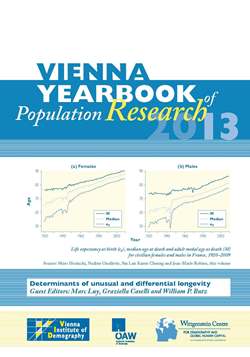
Vienna Yearbook of Population Research 2013, pp. 165-183, 2024/12/12

We examine variability in mortality risk among heterogeneous nondrinking statuses. We employ Cox proportional hazard models and the United States National Health Interview Survey-Linked Mortality Files (NHIS-LMF) to examine the risk of death associated with drinking and nondrinking statuses, net of demographic, socioeconomic, behavioural, health and geographic factors. Mortality risk is low for light drinkers and many individuals who abstain from drinking—including those who abstain for religious and moral reasons, have a responsibility to family, were brought up not to drink and are not social. Mortality is higher among former, infrequent and moderate drinkers, and among individuals who abstain because they do not like the taste of alcohol, are concerned that they will lose control or are concerned about adverse consequences. Unsurprisingly, mortality risk is by far the highest for heavy drinkers. Our results show that reasons for abstention capture heterogeneity in the risk of death among lifetime abstainers.
Keywords: Mortality; Mortal Age; Lifespan; Demography; United States